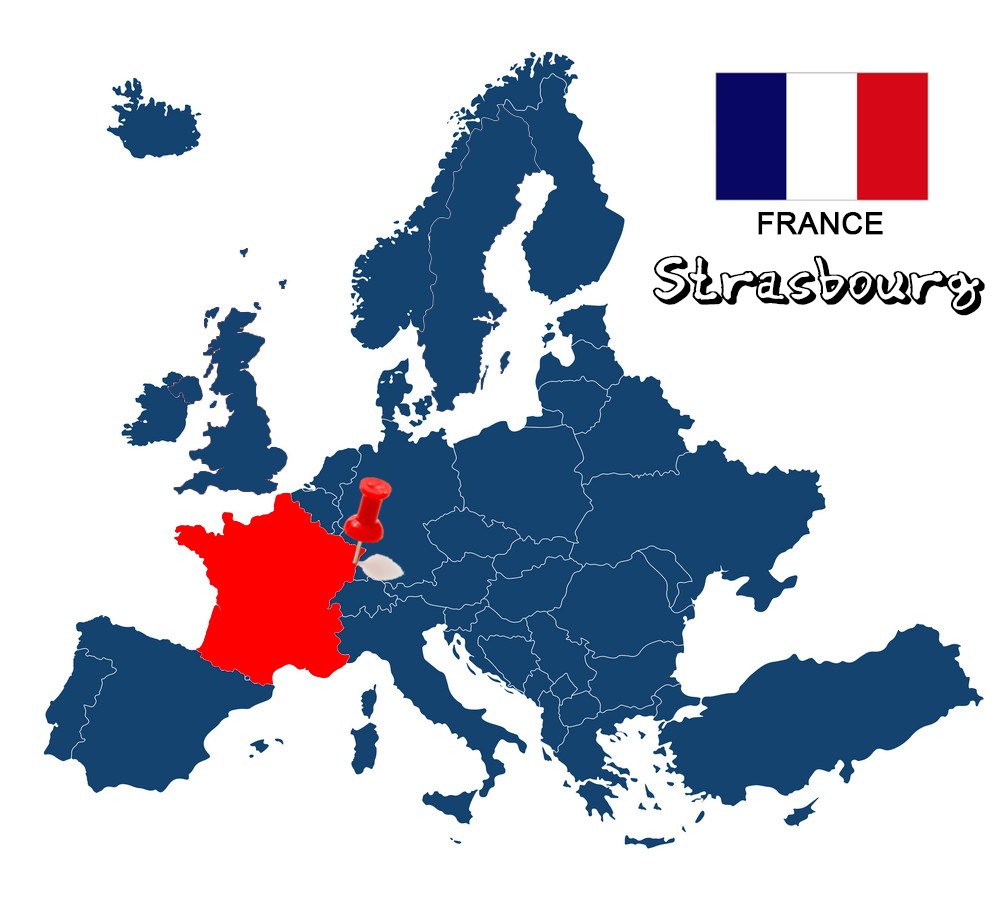
French finesse, German discipline and all this in a miniature of Venice. Strasbourg is a modern metropolis, but at the same time cosmopolitan and picturesque, with imposing buildings, houses literally on the river, special cuisine and a historic center, made for fairytale walks.
A few words about the city
Strasbourg is the capital and main city of the Lower Rhine (Bas-Rhin) and the region of Alsace (Alsace, Campania, Ardennes, Lorraine) in northeastern France. The city is built on the West Bank of the Rhine and is crossed by the River Ill, one of the tributaries of the Rhine, which is navigable for the most part, and there are many canals, in almost every part of the urban area. Alsace owes its name to the river, since in German Elsass means "Il region". The population of the city is 275,718 inhabitants (Allemans) and is a mixture of French and German elements, and is considered a bridge of unity between modern France and Germany. Two bridges connect Strasbourg with the German town of Kehl, ie France with Germany. It is a city that retains its historic centre and is therefore very picturesque, and it is also one of the two seats of the European Parliament (the other is in Brussels). The European Court of Human Rights and, since 1949, the Council of Europe have also been based in Strasbourg. So I will try to introduce you to Strasbourg through my own eyes and share with you what I think a person who visits it for the first time should see.
Notre Dam
An emblem of the city and a leading example of Gothic architecture is the Cathedral of Strasbourg (Notre Dame), in the Cathedral Square (Place de la Cathedrale). The imposing Gothic church of pink granite was the tallest building in the Christian world until the 19th century with a height of 149m, and today it is considered the sixth tallest church on the planet. To understand how important the temple is to the city, it is enough to consider that it is the second most visited Cathedral in France after Notre Dame in Paris, with about 8.5 million visitors per year! Its construction began in 1176 and finished 263 years later, in 1439, while the conservation works are necessary, as it was made from an unusual kind of rock, which over time eroded. It is worth visiting this temple at 12:30 in the afternoon to admire the figures of the clock, which offer a very amazing picture: a child, a teenager, an adult and an elderly person pass in front of death, while higher up the Apostles parade in turn in front of Christ. This entire visual feast is accompanied by the beating of wings and the sound of a large cock. Also, in front of the clock, there is a huge column of Angels, who depict the final judgment. Finally, you can climb the 332 steps to the spire, to enjoy the panorama of the city from the same spot where Goethe stood to overcome his fear of heights. Admission costs 4.40e.
Palais Rohan
On the banks of the River Ill dominates the Rohan Palace (Palais Rohan), a baroque building of 1742 made of sandstone, which was once the residence of the archbishop and today houses the main museums of the city, the Museum of Fine Arts (Musee des Beaux-Arts) and the Museum of Decorative Arts and Archaeology (Musee des Arts Decoratifs).
In the first museum, which covers the first and second floors of the palace, you will find about 865 works (250 are permanent) of Alsatian painters from the 14th century to 1871! Admission costs 6.5e.
At the decoration Museum, which is housed on the ground floor of the palace, you will have the opportunity to watch the evolution of Alsatian art over the centuries. There are many exhibits representing the Baroque style, gothic art and others with Roman Catholic and Protestant influences. You will also admire exhibits that reveal the quality of the porcelain creations of Strasbourg and in addition, the museum makes extensive reference to the operation of the astronomical clock located in the Cathedral of the city. And here the entrance costs 6.5e, but if you wish to visit these two museums and maybe more, it is worth procuring the gaily museum ticket that costs 12e.
Place Kleber
Kleber Square (Place Kleber) is located in the most central part of Strasbourg and without exaggeration I would say it is the heart of the city. It is part of the "Big Island" (Grande Ile), which is the historical center of Strasbourg, and since 1988 it has been designated a UNESCO World Heritage site. Originally the name was Waffenplatz (square of arms), but on 24 June 1840 it took the name of the French General Jean-Baptiste Kleber, who was born in Strasbourg in 1753 and was buried in the area of the square. In the center, you will find a large statue of the French general and a very impressive fountain, which is a pole of attraction for tourists and locals. Kleber Square is surrounded by many historic buildings, but what will attract your attention is nothing more than the magnificent Aubette, an art space, built in 1778, where its rooms are used for exhibitions and social events. Even around the square you will be able to browse the stores of some of the world's biggest clothing brands, based there. Finally, if you are in the city during the Christmas season, you will surely be impressed by the Christmas tree that is 30 meters high and is an institution for the square.
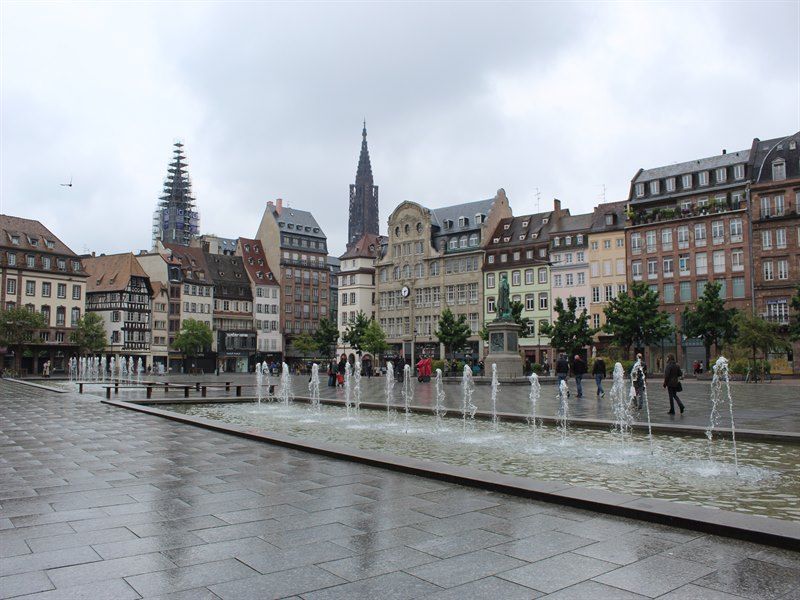
Place de la Republique
The Republic Square (Place de la Republique) is another very large square-park in the heart of the German quarter with majestic monuments, erected during the German period between 1871 and 1918. After the French defeat in 1870, Germany planned to make Strasbourg the capital of the Alsace-Lorraine region, and this quarter, known as "the new city," represented the new form of urban planning, with Broad streets, monumental administrative buildings and luxurious facilities. At the same time, the formation of green played a key role in the entire urban landscape.
The main attractions of the Square are the Palace of the Rhine (Palais du Rhin), which for many years was the Imperial Palace, the National and University Library (Bibliotheque nationale et universitaire) and the National Theatre (Theatre national de Strasbourg), all excellent examples of architecture. In the center of the Square also stands the War Memorial, work of sculptor Drivier, from 1936, depicting a mother with two sons, one of whom was killed for France and the other for Germany, a dramatic reality experienced by the inhabitants of Alsace in the two World Wars.
Parc de l'Orangerie
Strasbourg has many parks, but the main and most beautiful is the park of oranges (Parc de l'orangerie). It is an idyllic area of greenery in the heart of the city and a favorite destination for Alsatians and visitors for relaxation. It was created in the 19th century to impress Napoleon's wife, Josephine, to whom it is dedicated. In addition to the trademark of the park, which is no other than the countless orange groves, it is filled with manicured plants, huge trees, earthen streets and blooming flowers, it has a small zoo with rare species of animals, where you meet the symbol of Alsace, storks. In the park you will also find a small pond, which weather permitting, you can go boating with swans, ducks and of course, storks.
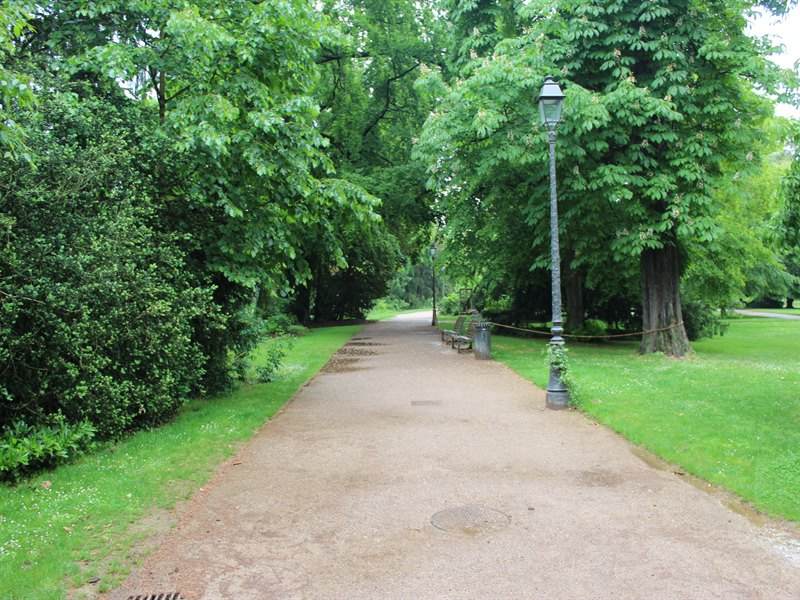
Parlement Europeen
Strasbourg is one of three cities (the other two are New York and Geneva), which are not state capitals but are home to major international institutions. The European Parliament (Parlement Europeen), the Council of the E.U. (Conseil de l ' Europe) and the Court of Human Rights (Cour europenne des droits de l’ homme) are pulling the strings of the Old Continent from the city of northeastern France.
From the River Ill, one can see the European Parliament building, a monumental glass facade that seems to symbolize the spirit of transparency of European democracy. On the other hand, the facade of the structure is completely different, and for many, it curiously resembles the ruins of the Colosseum in Rome. This modern glass building contrasts perfectly with the picturesque historic centre on the other side of Strasbourg, but this magical city manages to make its two sides coexist harmoniously. The parliament which completed in 1999 was supposed to include a 750-seat Hall (the largest in Europe), 1,133 offices, workplaces and relaxation areas, as well as adjoining administrative services. To visit it, you must follow a tour that you have booked before, as you can’t enter unaccompanied.
In the "European region" as I mentioned above you will also find the Council of Europe or as it is called The Palace of Europe. It is located on the so-called street with the stars, glued to the pavement, for prominent people who played an important role in the European Union, like De Gaulle, Francois Mitterrand, Helmut Kohl and others. This impressive building will be captured by the flags of the countries of the European Union waving outside, as well as by the statue of Europe. Finally, the Court of Human Rights, located directly opposite, is the least impressive of the three, while it is the only one that is unaccessible.
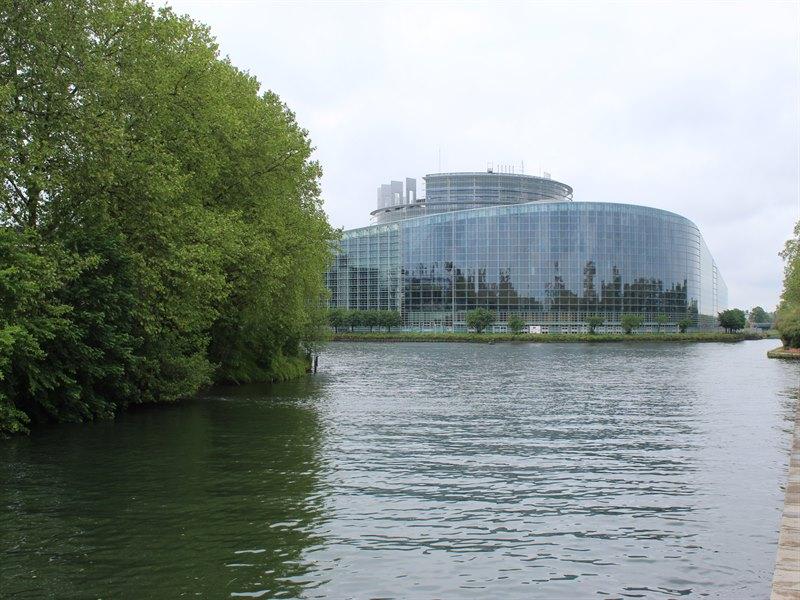
Petite France
The most beautiful and one of the most picturesque districts of Strasbourg is the Little France (Petite France), which is one of the UNESCO World Heritage sites. With the streets at the height of the River Ill, magnificent wooden houses of the 16th and 17th centuries with flowery balconies and the aroma of freshly baked bread flooding the alleys, it is vividly reminiscent of a postcard or a novel by Victor Hugo. Here are also the covered medieval bridges, which retain their name, although they lost their roofs in the 18th century. It is a series of bridges that connect the four tributaries of Ill, south of Little France, and you will also see four towers of the 14th century, remnants of the former fortifications that secured the independence of the former Republic of Strasbourg. After its annexation to France in 1681, a new fortress was built here by Vauban, which offers a panoramic view of the city. In addition, there you will find many restaurants and bars, located on picturesque docks, waiting to be discovered.
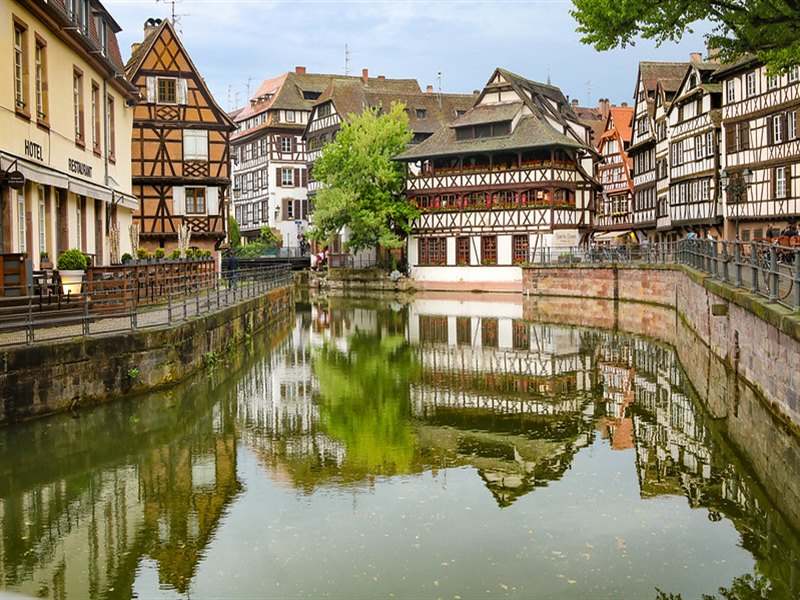
How to go
Unfortunately, there are no direct flights from Thessaloniki to Strasbourg, so your options are two. The first is to get to the city through an intermediate combined flight by air. The best option comes from Ryanair, namely a flight to London (Stansted Airport) and from there fly to Strasbourg (Aeroport de Strasbourg), where with proper planning one can find tickets from 180€ round trip. You can also fly to a nearby town (Mulhouse, Freiburg, Basel) and reach the city by train or bus, as the distances are small and the prices are low.
Where to stay
Although Strasbourg is a small town, is highly touristic, which implies many accommodations. Most of the sights and in general the interest of the city is focused on its historical center, so it is advisable to look for something around it. My suggestion is Sejours & Affairs Strasbourg Kleber a 2 star hotel, located close to the Cathedral and featuring spacious rooms and helpful staff, with good value for money.
How to move
Despite the fact that the main sights and interest of Strasbourg are concentrated in its historical center, which can be reached on foot, in the city, there is an excellent public transport system. Due to the size of the town, there is, of course, no metro, but you can use trams (3 lines) and buses, which carry out continuous routes covering the whole city. The city does not face traffic problems, since locals do not usually use vehicles in the city center, so renting a car would not be a bad idea. However, according to the residents, the ideal way to explore Strasbourg is by bike, since the city has bike lanes everywhere and there is generally cycling. Finally, taxis are somewhat expensive, but they are an easy way to travel as you can stop them on the road or find them in one of the dozens of squares in the city.
What to eat
The local cuisine is influenced by Germany with a dose of French finesse. Its trademark is marinated choucroute cabbage, which is usually served with smoked pork and more rarely with salmon. You will also taste plenty of duck and goose foie gras and plenty of sausages. Baeckeoffe consists of three meats marinated in wine and baked between layers of potatoes in a wood-fired oven, while tarte flambee includes, in addition to onions, which you will also often encounter, cream and pieces of smoked pork. Your meal will ideally be accompanied by white Alsatian wines, with excellent performances in the varieties Riesling, Gewurztraminer, Sylvaner and Pinot Blanc. Fans of red again look for Ottrott, Marlenheim, and Cleebourg, otherwise try the excellent variety of local beer.
Useful information

In France we travel with a passport or a new type of Police ID, where the details are indicated in Latin characters.
In Strasbourg the language used is, of course, French. Although most people know English, they may not speak to you on purpose, as the French are known to be a bit chauvinist.
The currency of the country is the euro.
Strasbourg is an hour behind Greece (GMT +2).
The unpaid Consulate General in Strasbourg is located at 49 Street, Avenue des Vosges and her phone is (00333) 88354024.
Getting to and from Strasbourg Airport is simple, since there are continuous Shuttle trains that will take you to the city centre in 8 minutes.
The climate of France is temperate Mediterranean, that is, it has mild, wet winters, warm, dry summers and enough precipitation, so the ideal visiting period is autumn or spring.
Recommended excursions → Mulhouse, Freiburg, Baden-Baden, Kehl
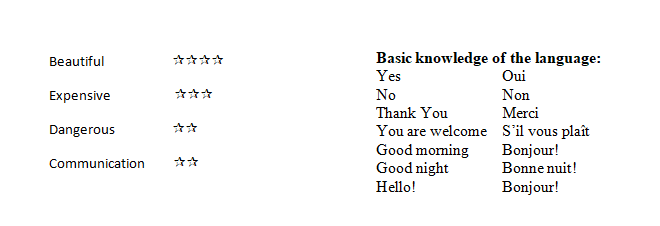
If this article seemed interesting or contributed to your quality information, then you can like my facebook page: o_thessalonikios or follow me on instagram!
Mouzakidis Pantelis









